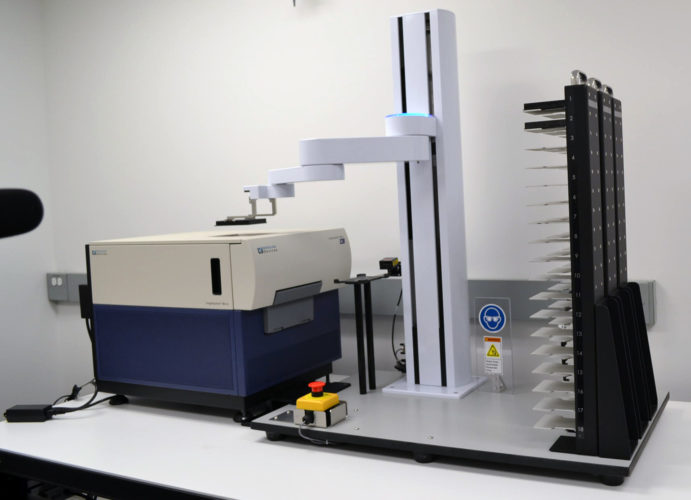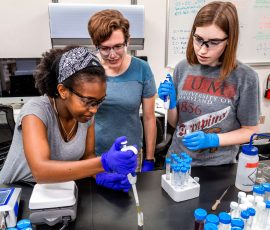
Think of the difference in information you get by looking at a single number versus looking at a picture. Imagine that you see the number 90 and are told that it’s the speed a car is traveling at. Now imagine that you see a picture of a car traveling at this speed, and you get more details—weather, road condition, number of other cars in the area, time of day. That’s what scientists in Infectious Disease Research Institute’s (IDRI) Drug Discovery program can do now, thanks to the ability to conduct high throughput, high content analysis (HCA) of host and pathogen interactions.
“Using high throughput microscopy, our scientists now have detailed pictures that can be interrogated time and time again to give us a more complete view of biological processes as we seek new drug targets,” said Tanya Parish, senior vice president of drug discovery. “For example, in our new tuberculosis (TB) assay, we can look at both bacterial and macrophage viability in the same images; we can see the full picture—see the shape—not just a number representation. HCA also offers us a new capacity for higher magnification—the resolution is very high. We’ve only scratched the surface of what HCA can do.”
The HCA capacity is still relatively new for IDRI, funded in part by the Murdock Trust, the Life Sciences Discovery Fund and the Washington Research Foundation. And it’s unique because of the ability to screen (under proper safety conditions) highly infectious organisms like the bacterium that causes TB. But IDRI scientists are not focused just on TB for this screening capability.
“We now have TB and adjuvant screens set up and running and are in the process of running a screen for leishmaniasis (a parasitic disease),” Parish explained. The screens are being used to look for new small molecules that could boost the ability of macrophages to kill TB.
The result of the HCA screening? A magnitude of data. “We’ve amassed 32 terabytes of data in just over a year,” said Parish. “The more information we have, the higher the likelihood that we’ll find new hits to develop new drugs for TB.”
The Murdock Trust is proud to support the ground-breaking research happening at IDRI.








